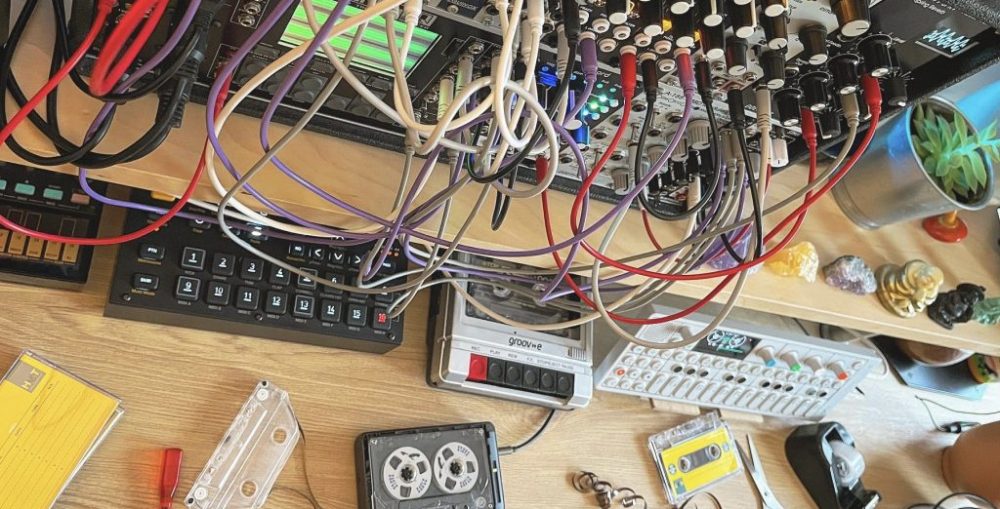At this point I had an interesting line of work work the instruments that I mentioned in the last post. This loop sounded quite good for me and I thought that I could stretch these sounds to a whole track so I had to start thinking on a good way to sequence everything altogether with the DAW and being able to record each instrument separately. Here is a little jam with the elements I had at the beginning without any sequencing:
In order to sequence every instrument with the DAW I created a new project on Ableton where I loaded 16 midi tracks, and each one was routed to the Digitakt, because this one features 8 own sample tracks and the following 9 to 16 tracks can sequence any other midi devices so this channel were controlled by Ableton via USB and the Digitakt then was connected via midi to Nerdseq, a modular sequencer which can sequence up to 6 CV tracks on the modular synthesiser, plus a midi device too, where I will connected the Microfreak.

As we can see in the image, this was the main sequencing interface for this project, having routed 16 midi tracks from Ableton to Digitakt, and then from this one controlling other devices in the studio. Nerdeseq then was configured to receive external midi on each of its CV channels, however I only needed one for the baseline but I’ll keep this configuration anyway for future projects.

Everything was ready now to start sequencing the whole track, this is very useful as we can start to see different structure and timing for the different tracks and also create melodies and automations more accurately; this was specially useful when I sequenced the strings on the OP-1, this one just needed to be connected via USB to the computer to be arranged on Ableton, and I was able to create a much more precise sequence for this sound.

These were the most important steps that I followed during the sequencing process, the arrangement of a track is always much more intuitive when is done from a computer with a DAW and it also give us the possibility to make changes on the structure in real time, controlling different instruments from the same device. After some time developing the arrangement and careful consideration to achieve what I was looking for, I just needed now to record every instrument individually and we’ll se this on the next post.
